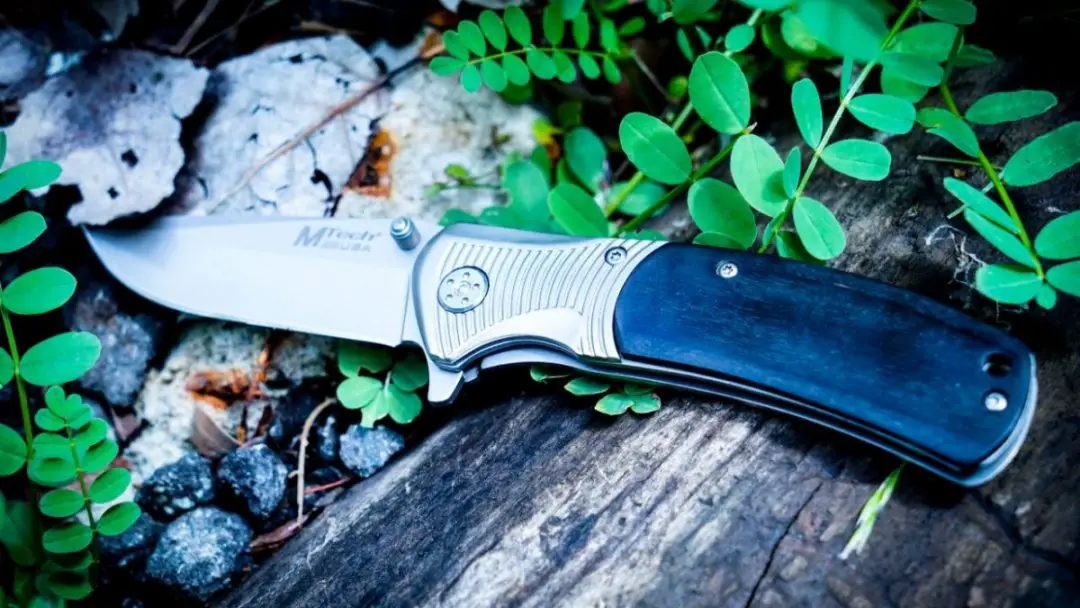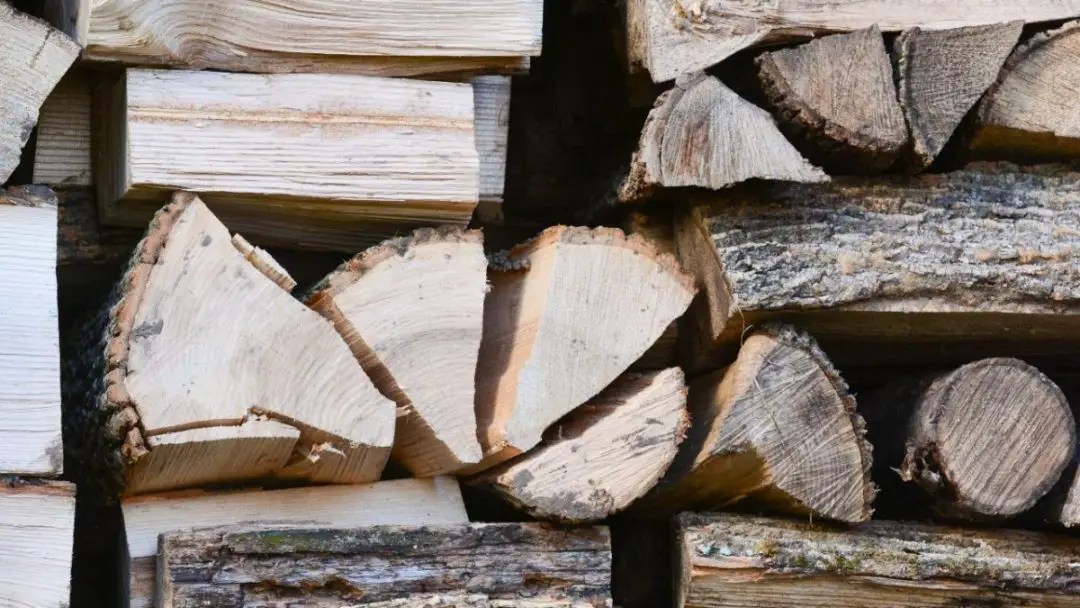Batoning wood with a knife is often a task that is done using a full tang, durable, fixed blade knife. But can you baton wood with a pocket or folding knife?
Batoning wood with a folding knife is usually not a good idea unless you have a really durable and heavy-duty knife. The reason for this is because the impact from your batoning stick on the spine of the knife could loosen or break the pivot pin, blade, or handle on a folding knife.
Batoning wood with a folding knife can be detrimental to the blade and opening system. It is important to know what it could do to your folding knife, as well as how to complete the task of batoning if you are in a situation where you must do it using your pocket knife.
Table of Contents
Why You Should NOT Baton with a Folding Knife
Hitting the spine of a fixed blade, full tang, survival knife with a piece of wood causes a lot of stress on the knife and has the potential to break it, imagine what it would do to a pocket or folding knife!

When your baton with a full tang knife, the impact is absorbed through the entire knife because the blade extends into the handle quite a ways. However, a folding knife doesn’t have a tang that goes into the handle so all the impact is pushed into the blade and the pin that allows the knife to fold.
Pocket and folding knives typically aren’t designed to take that much impact and pressure, which means sooner or later the blade, pivot pin, or even the handle of the folding knife is going to give way. Batoning with a folding knife is just a good way to potentially ruin your knife.
It’s also important to think about what will happen when the folding knife gives out from batoning. Not only will the knife probably bend or snap, but it also will likely cause you to hit yourself with the broken knife or with your batoning stick.
Basically, it’s a pretty bad idea to baton with a pocket or folding knife. The large majority of folding knives aren’t designed or made to take the amount of pressure, stress, and the impact that batoning would put on the knife. Just leave batoning to the full tang survival knives.
Quick Overview of Batoning With a Knife
Really quick, I just wanted to do a short overview of batoning with a knife. Most of the people reading this are going to have a basic understanding of the skill, but I’m going to do this just to freshen it up in your mind.
If you want the long version and a beginners’ guide on how to baton with a knife, check out this article I wrote on the subject.
Put simply, batoning is when you place a knife on the end of a log or piece of wood that is on its end. Then you take another log or piece of wood and pound the spine of the blade into the wood to split it.
While batoning is neither the best way to split wood by a long shot or the best thing for your knife, it is a skill that is handy to know and be able to do well. It is a really good skill to know how to do because you often need to split wood and you are more likely to be carrying a knife on you than you are to have an ax or a hatchet.
Batoning does have its limits though. The wood that you baton or split has to be thinner than the blade of your knife. The knife that you baton with also has to be able to withstand the brutal pounding of being jammed into a log by being hit by another piece of wood on the spine of the blade.

When You Should Baton with a Folding Knife
While it is SUPER highly suggested by almost anyone that knows what they’re talking about to not baton anything with a folding knife because of the things that could happen that I described earlier, there are some exceptions.
Really, the only valid exception is a survival situation. If your life depends on splitting a piece of wood (which is highly unlikely) it would be a good time to break out the skill of batoning while using a folding knife.
But really, the best option in a survival situation is probably not to risk snapping your knife in the first place. Any knife, even a folding one, could be a valuable and useful tool to complete so many other vital tasks that would keep you alive more than splitting a piece of wood would.
Put simply, I’m not your mom so I can’t tell you what to do with your pocket of folding knife, but there are really very few situations where using a folding knife to baton wood is necessary.
Ways to Minimize Damage to Your Folding Knife from Batoning
So while it is very rare that you will ever find yourself in a situation where you will absolutely need to use a folding knife to baton through a piece of wood, you might as well know how to do it in case the need arises.
While there is not an actual way to baton wood without hurting your knife in some way, there are a few things that you can do to minimize the damage being done to your blade.
The suggestions below are not going to save your folding knife from the large amount of intense stress and pressure that is put onto the blade from batoning. They are simply going to make it a little less brutal for your knife and hopefully save your folding knife from snapping.
- Put a cloth on top of your knife to soften a hit from the baton
- Use a soft type of wood for your batoning stick
- Don’t hit your knife very hard with your baton
- Use a proper batoning technique to minimize the number of times you have to hit your knife with your baton
- Only baton wood that is small enough that your knife can handle it comfortably
Basically, anything you can do to make the impact of the baton and your knife spine any less brutal and forceful will drastically improve your chances of not snapping your knife. Additionally, a major part of batoning that eventually leads to harm to a knife is not just the force of the hit, but also hardness and texture of your baton that you are hitting the spine of your knife with.
If your baton is a super rough piece of wood with a bunch of hard bark on it, when you hit your knife to baton through a piece of wood, it will gouge and dent your knife. Eventually, over time, a rough batoning stick will begin to affect the structural integrity of your knife.
All of the pressure from the baton hits combined with the small gouges and knicks from the baton, eventually, all folding knives will give way at their pivot point. It may last a long time and be able to split a lot of wood, but batoning is so intense for the knife that it will eventually give out.
The best thing to do is just not use your folding knife for batoning. It will save you a lot of money, time, knives, and stress. Trust me.
Conclusion
Overall, folding knives can be used for batoning through a piece of wood, but it is not recommended. There are knives out there that can handle batoning but the vast majority of folding knives are simply not designed for that kind of work and will eventually snap.
One of the biggest mistakes that people make when they baton with a folding knife is not taking into consideration the lasting effect that it will have on their blade.
While it might get through a few logs and pieces of wood, even some of the most well-made folding knives will eventually crumble under repeated intensive use. Every time you hit your knife with a batoning stick, all of that energy is absorbed by the blade and transferred through the knife.
The main weak point of a folding knife is the pivot pin and the place where it folds. Repeated batoning with a folding knife will eventually break it. It’s just a fact.

